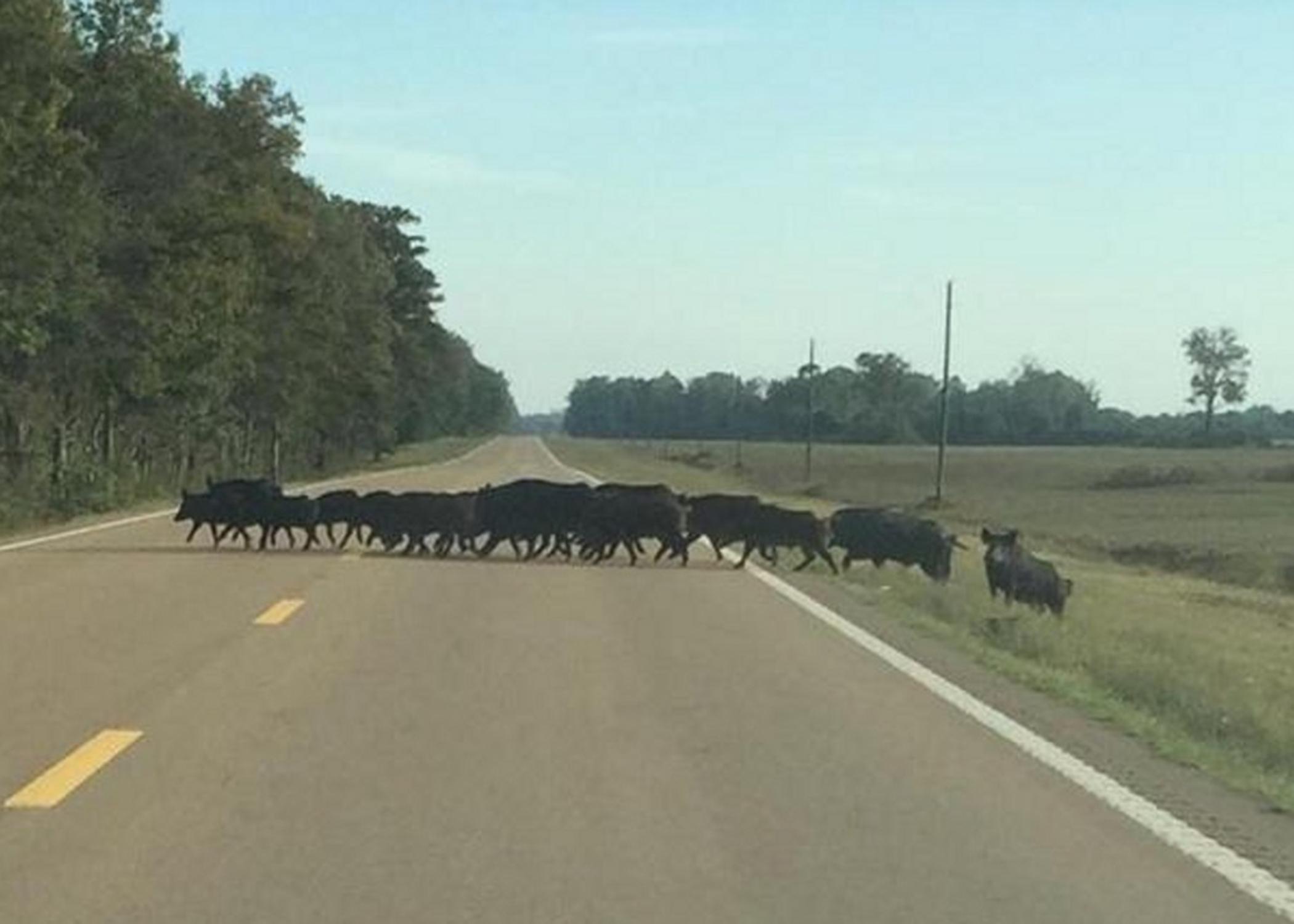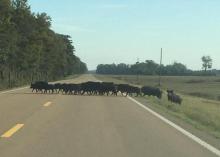Information Possibly Outdated
The information presented on this page was originally released on October 2, 2015. It may not be outdated, but please search our site for more current information. If you plan to quote or reference this information in a publication, please check with the Extension specialist or author before proceeding.
Avoid half-truths, myths about wild pigs in the state
STARKVILLE, Miss. -- A great deal of my time with the Mississippi State University Extension Service has been spent raising public awareness about wild pig problems, and I have encountered quite a few myths and half-truths about these often destructive pests.
I’ve taught landowners and some natural resources professionals the most effective methods to trap and remove wild pigs, and I’ve listened to a lot of stories and read a lot of articles about the animals. While most articles and news reports are pretty accurate, some come up a little short in presenting all of the information.
In some cases, this is a result of sensationalized writing to get more website visits or “hits.” In others, it’s a matter of the “wow” factor, and the qualifying statement is not presented. While wild pigs are a definite problem, I want to share a few specifics about these animals to address some of the misinformation surrounding them.
Myth: A wild hog can have up to three litters of pigs in a year.
While this statement is somewhat true, conditions have to be right -- very right -- for it to happen in the wild. Pigs, both domestic and wild, are biologically capable of producing three litters in about 14 months. While such high reproductive rates can be achieved in commercial swine operations, where nutrition is steady and breeding is controlled, it just doesn’t work that way in the wild.
Can it happen in the wild? Possibly, but it would be an extremely rare event. Limiting factors include nutrition, fertility and the presence of sexually mature boars when sows are receptive to breeding. In reality, most wild sows have one litter per year. On occasion, a few sows will produce two litters per year.
Even at this rate, there is a potential for high pig production. For example, assume that there are 20 sows in an area. If each sow produces one litter of pigs and an average of four pigs per litter survive to adulthood, that’s 80 pigs per year. Now, let’s say 40 of these pigs are female, and we allow this cycle to continue unchecked for three years. Even without exaggerating their reproductive rate, that’s a lot of pigs! It’s just not as many as some articles make it out to be.
Myth: Wild hogs are sexually mature at 6 months of age.
This is another misleading statement. In some cases, individual pigs are capable of reproducing as early as 6 months of age. But, just as in humans, early maturation occurs on an individual basis.
Myth: We don’t worry about the wild pigs over here. The river keeps them from crossing over onto our side.
Don’t get too comfortable with that situation. Wild hogs swim pretty well. Even the Mississippi River is not a barrier to wild hog movements. Whether it is to escape danger or through natural dispersal in search of food and/or more suitable habitat, hogs can cross rivers if they need to.
Myth: Wild hogs won’t cross that blacktop road. We’ve had them for years on this side of the road but have never seen any hogs or hog sign on the other side.
There is photographic evidence of pigs crossing major highways, and there have been vehicle collisions with pigs in many parts of the country. However, there are some cases where wild hogs have lived on one side of a highway or road for years but, for whatever reason, have yet to cross over to property on the other side.
It’s strange, and I don’t have a solid explanation for this behavior. My best guess is that the very fringe of their home range is somewhere along that side of the highway. Or, for some reason, they just don’t like the other side of the road or highway. Whatever the reason, my advice is to keep a watchful eye.
Myth: If a wild hog escapes from a trap, you’ll never catch it again.
Several graduate students and I proved this statement wrong just a few months ago. According to a colleague from another state, if you’re trying to capture and remove a group of pigs, and you only catch a couple of them, let them out of the trap, and they all will come back. While researching some trapping techniques, we had a similar situation with a pair of boars that were visiting the trap. We caught one of them but missed the other, so we decided to release the one we captured. Sure enough, several nights later they both returned to the trap, and we successfully captured both of them.
Will this work with every pig you catch and release? Once again, I think this is more of an individual thing and doesn’t hold true for every pig. Also, I think it depends on what the pig experiences while inside the trap. Was it harassed? Did it have to stay in the trap for a long time before it was released? Are you shooting at pigs and hunting them with dogs while you’re trying to trap? Most likely, it’s based on individual experiences and previous experiences. Another explanation is that sometimes you come across a “Yogi Pig” -- one that’s smarter than the average pig.
In closing, I want to be clear that this column is not intended to make light of the wild pig problem in our state and across the Southeast. It’s a serious problem for many crop producers and a threat to many of our native wildlife species. However, in today’s world, being the first to report something and getting the information out quickly sometimes overshadows making sure the whole story is told.
We do want to increase public awareness about the seriousness of the damage wild pigs cause to row crops and the threat they pose to livestock production and native wildlife species. But we also want to maintain our credibility be sure the information in our messages is accurate.
 Editor’s Note: Extension Outdoors is a column authored by several different experts in the Mississippi State University Extension Service.
Editor’s Note: Extension Outdoors is a column authored by several different experts in the Mississippi State University Extension Service.

Editor’s Note: Extension Outdoors is a column authored by several different experts in the Mississippi State University Extension Service.






